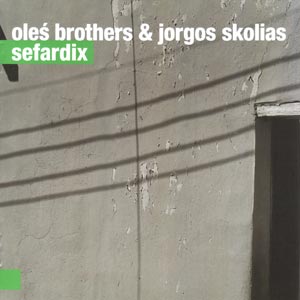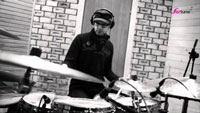To jest tylko fragment strony. |
SEFARDIX
Oleś Brothers & Jorgos Skolias
For Tune 2013
CD - 45 zł Dodaj do koszyka | ||
|
| |
opis:
Wraz z exodusem sefardyjskich Żydów, wygnanych z XV-wiecznej Hiszpanii, a zaraz potem Portugalii, ich muzyka rozpierzchła się po całej Europie, dotarła do Afryki Północnej i współczesnej Turcji, odmieniając kulturowo i muzycznie wszystkie te miejsca, ale i odmieniając samą siebie. Z czasem stała się żywotną częścią muzycznego pejzażu Europy, a jej wpływy przekroczyły ocean. Skąd pomysł, aby muzykę Sefardyjczyków zagrać od nowa i zaśpiewać wszystko po grecku? Czy to chęć nieustannego redefiniowania tej muzyki, czy nieco postmodernistyczne dążenie do przełamania kolejnego kanonu? Pomysł narodził się w głowie Mirona Zajferta, szefa warszawskiego festiwalu Nowa Muzyka Żydowska, i to on - w ramach tegoż festiwalu - zamówił projekt SEFARDIX na jego edycję w 2011 roku. Założeniem i jednym z głównych celów, zarówno zamawiającego, jak i artystów, było zagranie muzyki, która będzie raczej opowieścią o niej niż wyłącznie jej reinterpretacją. Na płycie nie mogło zabraknąć improwizacji, która w muzyce sefardyjskiej była spuścizną po 800-letniej obecności Arabów w Hiszpanii, oraz utworów solowych, które w postaci pieśni a capella stanowiły istotną część tej muzyki. Instrumentarium, choć tu zdecydowanie nietypowe, mieści się w sefardyjskich normach, zawiera bowiem głos, instrumenty strunowe szarpane i smyczkowe (w tej podwójnej roli kontrabas), oraz instrumenty perkusyjne (tu rozbudowany zestaw perkusyjny).
Marcin Oleś
In the aftermath of the exodus of the Sephardic Jews, expelled first from the 15th century Spain and soon after from Portugal, their music was dispersed throughout Europe, then reached North Africa and Turkey, transforming local culture and music and undergoing a transformation itself. Over time it became a vital component of the European musical landscape and its influence spread across the ocean. Where then did the idea originate that the music of the Sephardim could be played in a novel way and sung in Greek? Did it spring from the urge to redefine this music again, or maybe from a somewhat postmodern desire to violate yet another canon? The idea was the brainchild of Miron Zejfert, head of the New Jewish Music Festival in Warsaw, who commissioned the Sefardix Project for the festival's second edition in 2011. The premise of the undertaking, as well as one of the main goals of both the organizer and the musicians, was to create pieces which would tell the story of the music instead of focusing solely on its reinterpretation.
The disc would be incomplete without improvisation, which in Sephardic music can betraced to the legacy of the 800-year long Arab presence in Spain and to the solo pieces whichin the form of a capella songs were an essential element of this music. Although the instrumentation here is resolutely unconventional, it conforms to Sephardic norms since it includes vocals, plucked and bowed strings (the bass fulfilling here a dual role) and also percussion (with augmented instrumentation).
Marcin Oleś
multimedia:
promomiks
skład zespołu:
Jorgos Skolias - śpiew vocal
Marcin Oleś - kontrabas double bass
Bartłomiej Brat Oleś - perkusja drums

